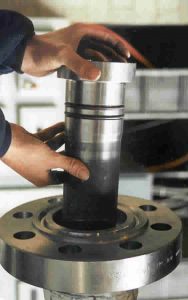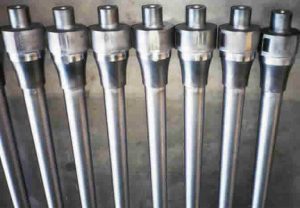Dewatering Hydrocyclones
Send us an enquiry by downloading the Input Data Sheet, and return to us at sales@eprocess-tech.com
Dewatering hydrocyclones vary in size as they are required to perform a number of different tasks, and the application is more complex than standard deoilers due to the wide varying water:oil ratio. Feasible applications can generally be classified as either water continuous (70-90% water cut) or oil continuous (10-30% water cut).
The hydraulic characteristics of these type of hydrocyclones can vary significantly, and depend on water cut, fluid viscosity, and operating pressure. As a rule of thumb, the capacity of a dewatering hydrocyclone is generally 30% higher than a deoiler of the same size and pressure drop.
Dewatering hydrocyclones must be installed as far “upstream” as possible in the process system, where the greatest level of pressure and temperature can be best utilized. Useful separation is expected at oil viscosity of less than 10 cSt.
The inlet stream to the dewatering hydrocyclone should be substantially gas free. The overflow and underflow streams typically require additional processing either by second stage deoiling hydrocyclones or conventional separation equipment.
Benefits:
- Compact – 10% the size and weight of conventional systems
- Separation performance unaffected by external motion
- Most efficient, and cost effective solution to water constrained facilities
Applications:
- Pre-separator and dehydrator capabilities
- Produced water cleanup
- Free water knockout
- Downhole water reinjection
Operations:
- In water continuous service (water cut 70 – 90%) a dewatering hydrocyclone can typically dehydrate the oil stream to 85 – 90%
- In oil continuous service (water cut 10 – 30%) a dewatering hydrocyclone can typically dehydrate the oil stream to 95 – 98 %


